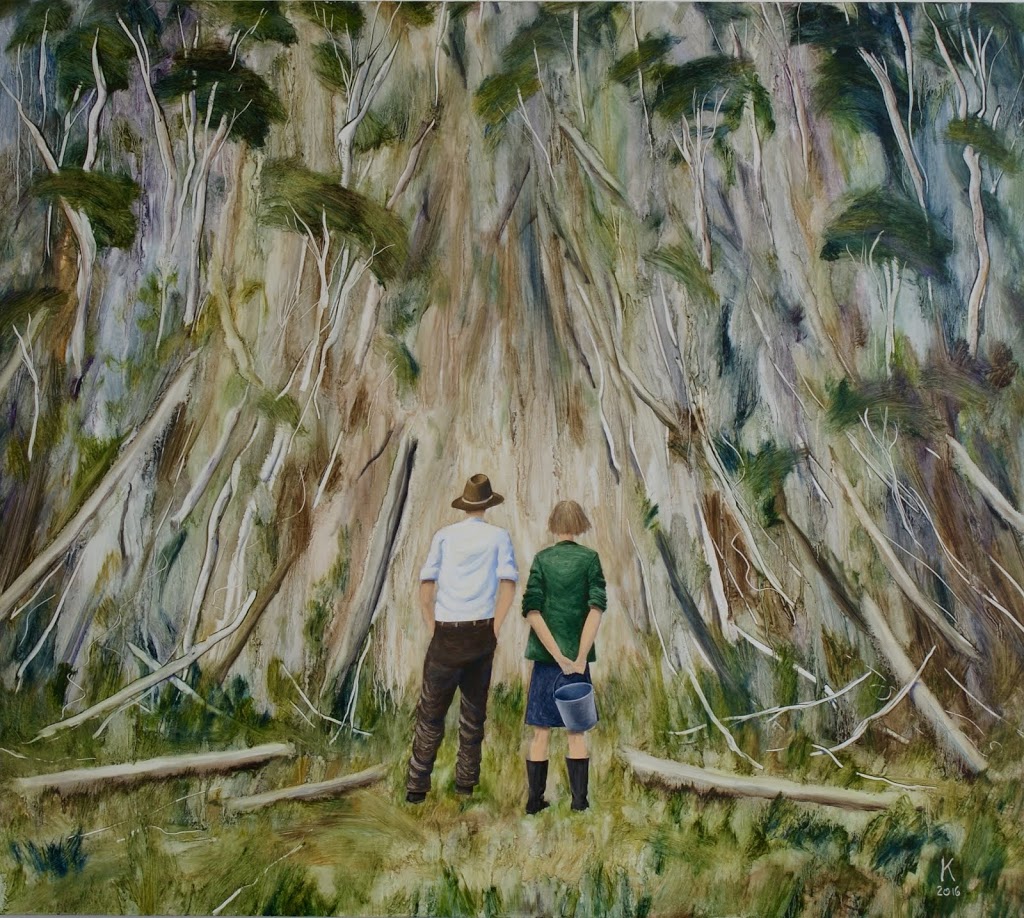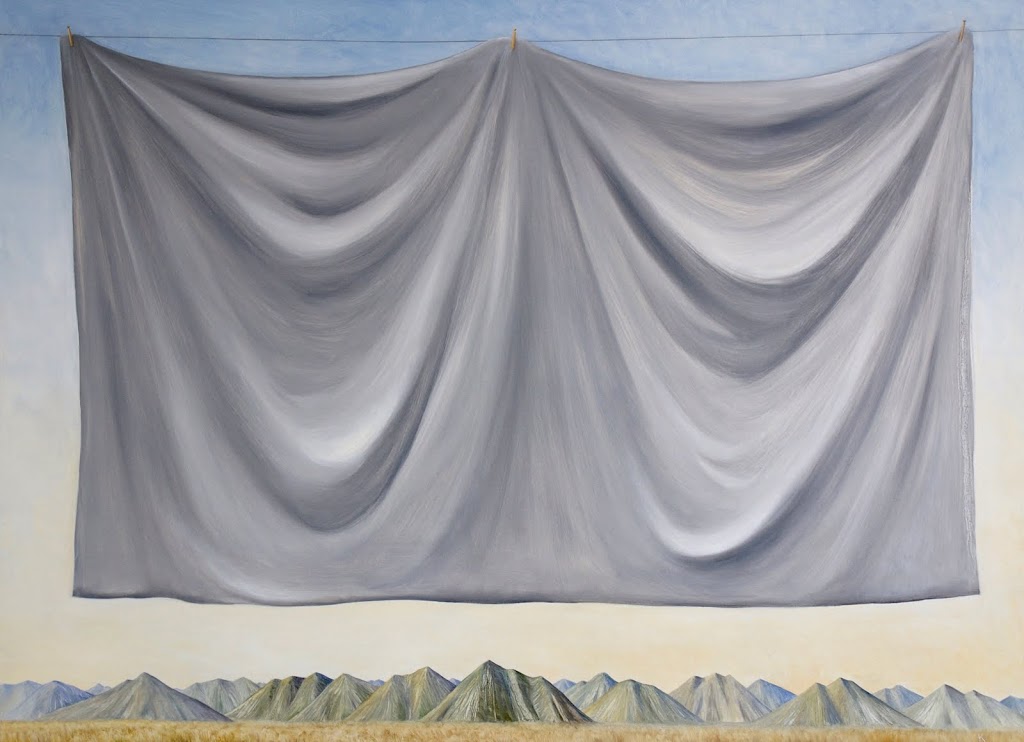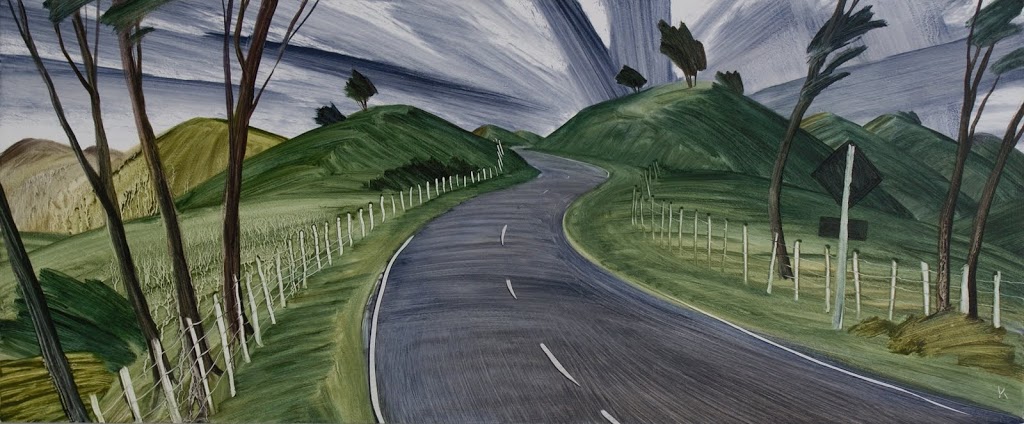My recent shows have had been about historical figures. This one is simply a series of landscapes.





Inland was a joint exhibition with the sculptor Bing Dawe that was shown at Whitespace Gallery until Sunday the 6th of November 2016.
Here is TJ McNamara’s review of the show from the New Zealand Herald
The special effects of modern acrylic rather than oil paint are used by Bob Kerr in his show, Inland. Although all the paintings generally are of New Zealand landscapes, there are always traces of human activity and a sense of concern for damage done to the land.
In a range of steep bare hills of farmland, a raw road has been cut through the slopes. It is spectacular but it will produce erosion and the farmer’s bulldozer that provokes this loss of pasture sits bright red on the road like Smaug the dragon taking the air.
In The Paraparas, an even longer road loops fascinatingly across the hills but on one of them erosion has already begun. Other damage done in the effort to establish pasture is exemplified by bare dead logs lying like lines of perspective pointing to the future in Te Humenga Dunes. The dryness of the logs, the bareness of the hills the thinness of vegetation is conveyed by thin paint that is often scraped through to underpaint to create forms.
The flexibility of effect of the paint is used well for human interventions, too. Seven symbolic suitcases sit as strange invasive objects on a road in one painting. In another, the outstanding work in the show, it is used to separate two figures from the natural environment.
They are Tom and Elizabeth from the famous poem by Denis Glover where death and madness overtake the couple striving against the odds to establish a farm during the Great Depression. Among burnt logs, they stand facing an immense tree trunk greater than any kauri. Its bark surface is excellently conveyed. It emphasises its role as symbolic obstacle rather than a simple illustration of the poem.
It completes a small but very unusual show.




